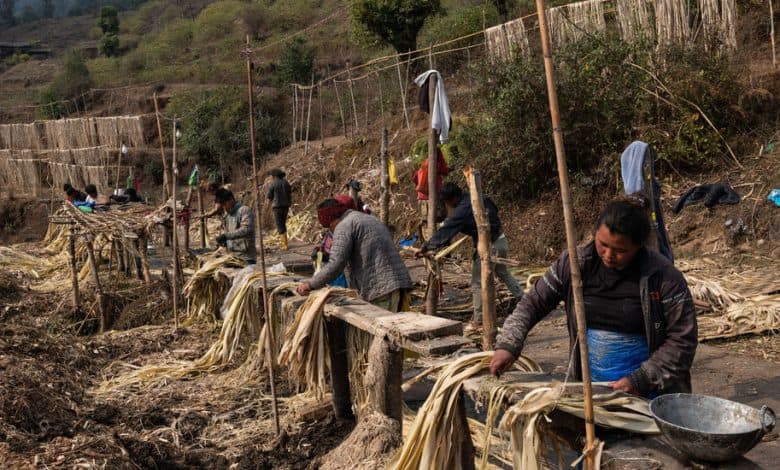On Himalayan Hillsides Grows Japan’s Cold, Hard Cash

The views are spectacular in this corner of eastern Nepal, between the world’s highest mountains and the tea estates of India’s Darjeeling district, where rare orchids grow and red pandas play on the lush hillsides.
But life can be tough. Wild animals destroyed the corn and potato crops of Pasang Sherpa, a farmer born near Mount Everest. He gave up on those plants a dozen years ago and resorted to raising one that seemed to have little value: argeli, an evergreen, yellow-flowering shrub found wild in the Himalayas. Farmers grew it for fencing or firewood.
Mr. Sherpa had no idea that bark stripped from his argeli would one day turn into pure money — the outgrowth of an unusual trade in which one of the poorest pockets of Asia supplies a primary ingredient for the economy in one of the richest.

The argeli plant grows wild in the Himalayas. Before Japan began buying it for currency, its main use in Nepal was for firewood or fencing.
Japan’s currency is printed on special paper that can no longer be sourced at home. The Japanese love their old-fashioned yen notes, and this year they need mountains of fresh ones, so Mr. Sherpa and his neighbors have a lucrative reason to hang on to their hillsides.
